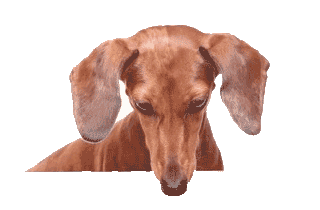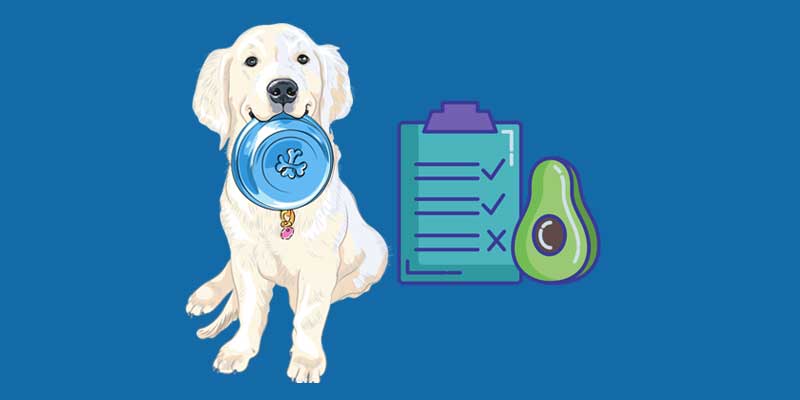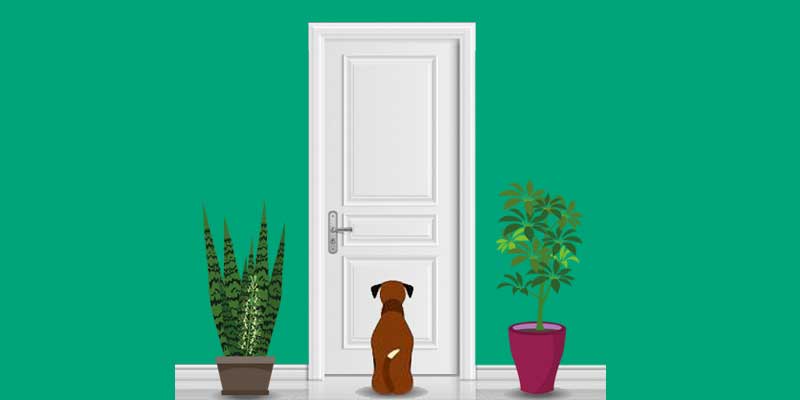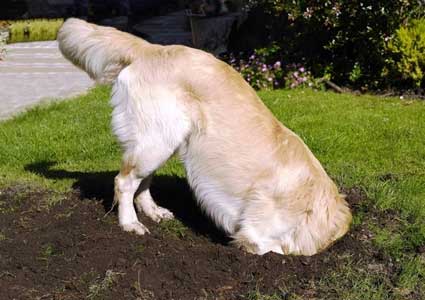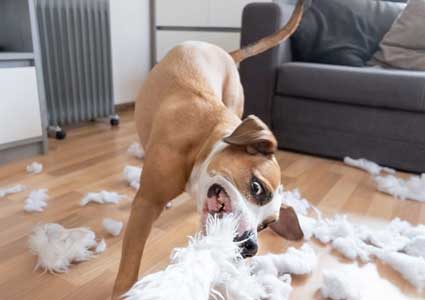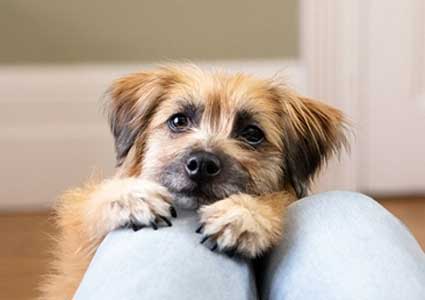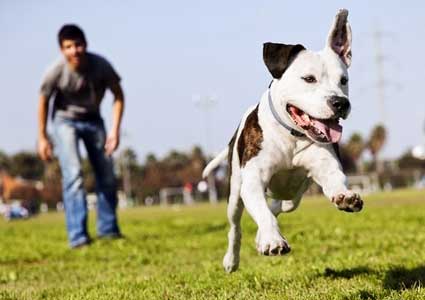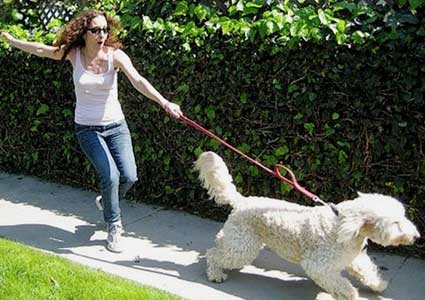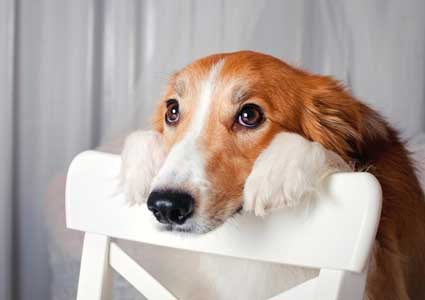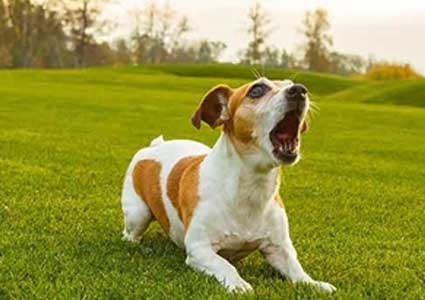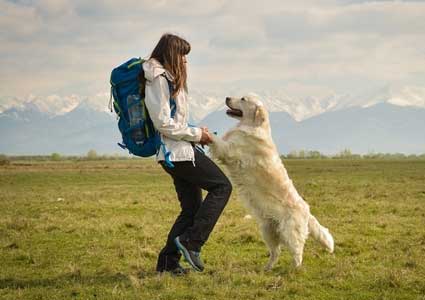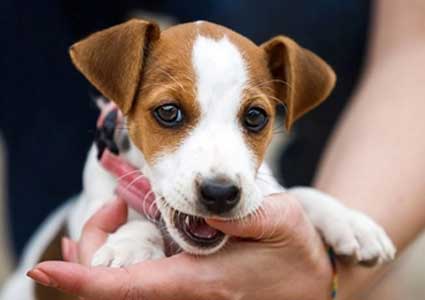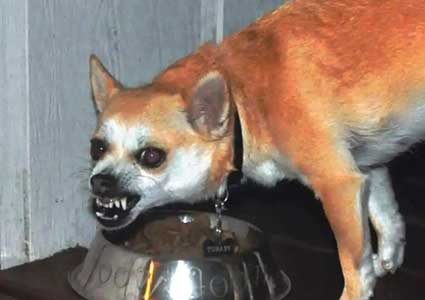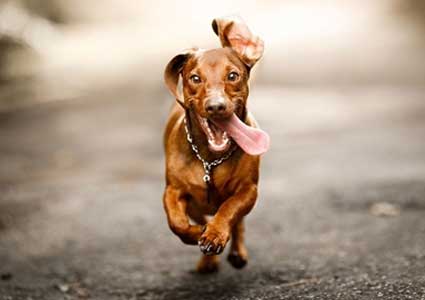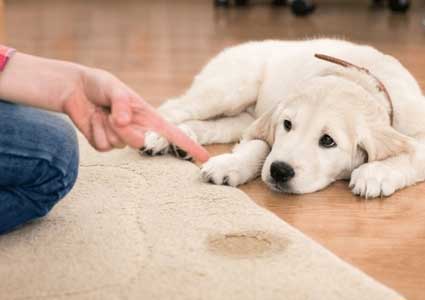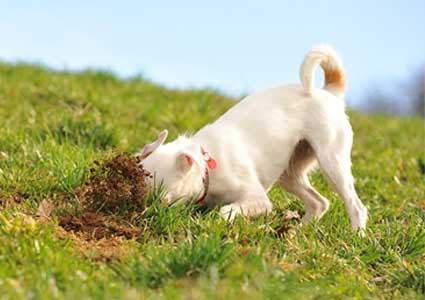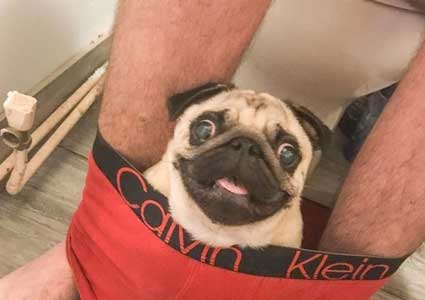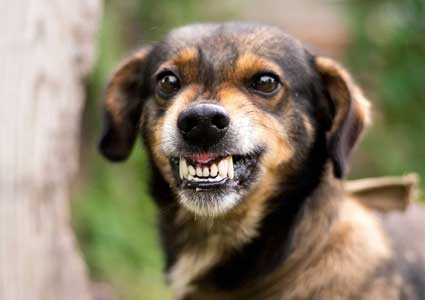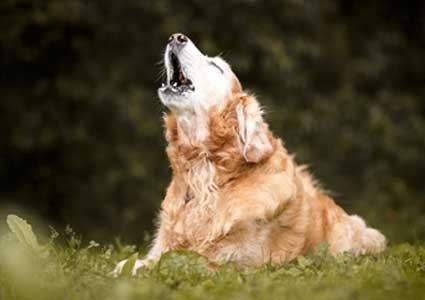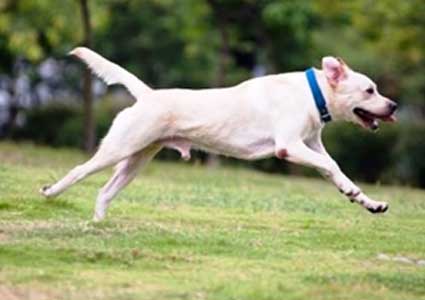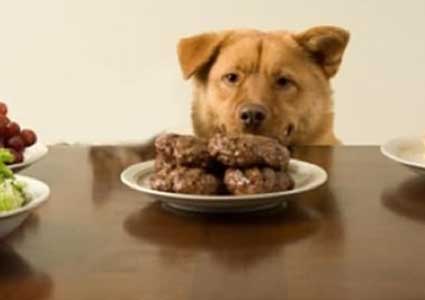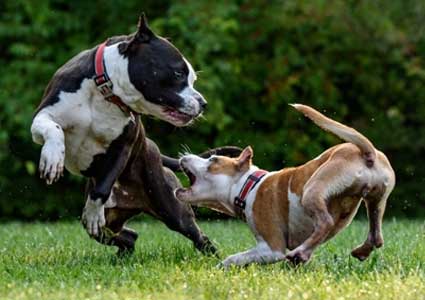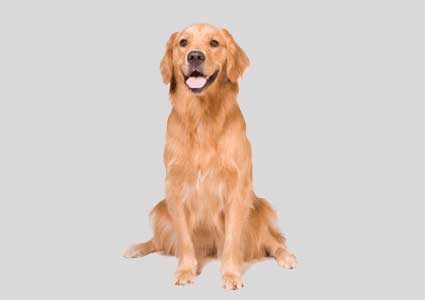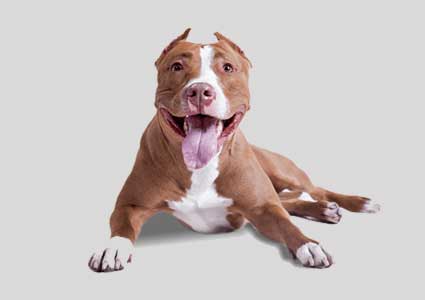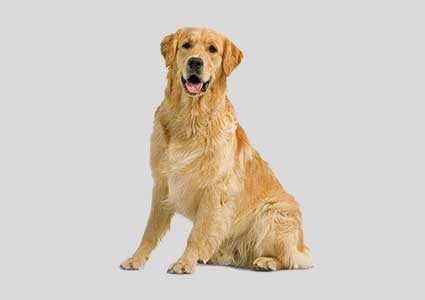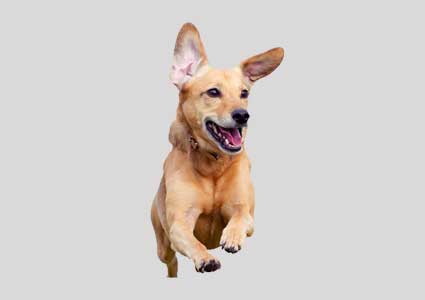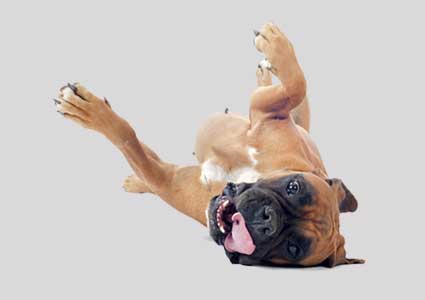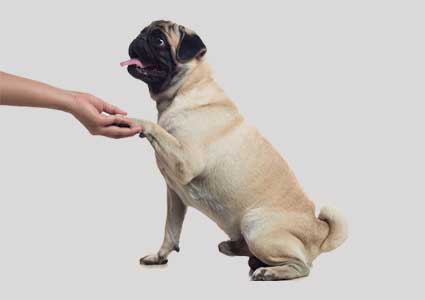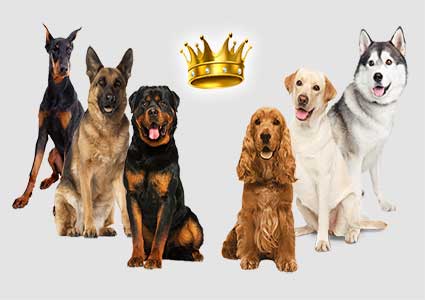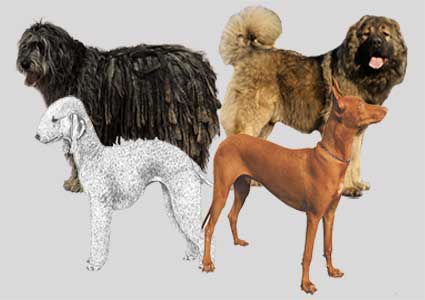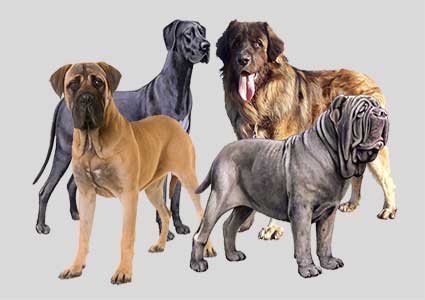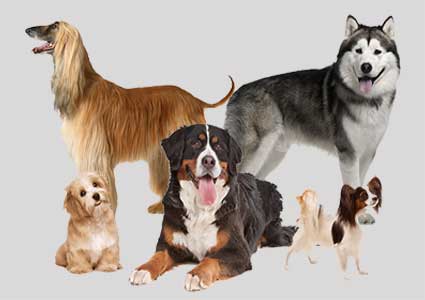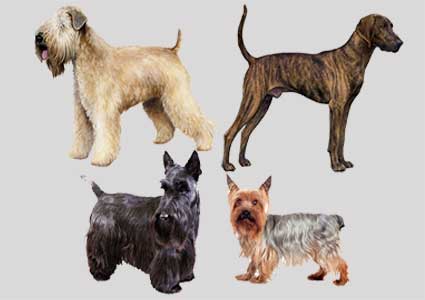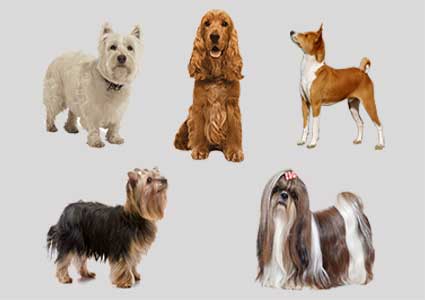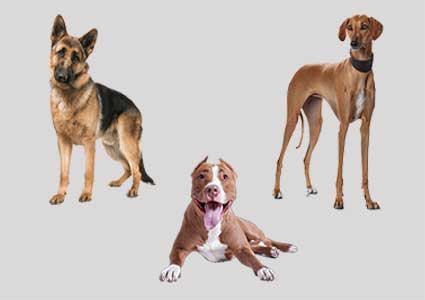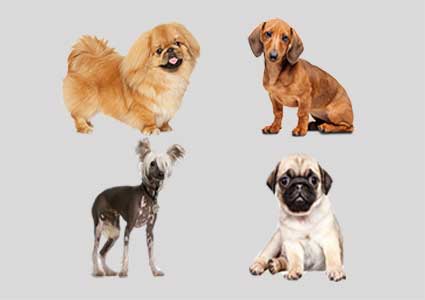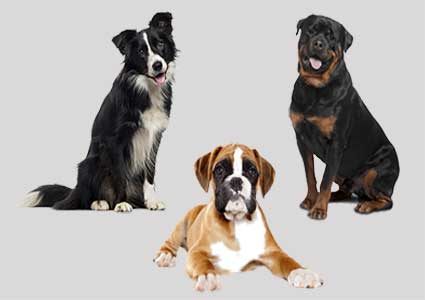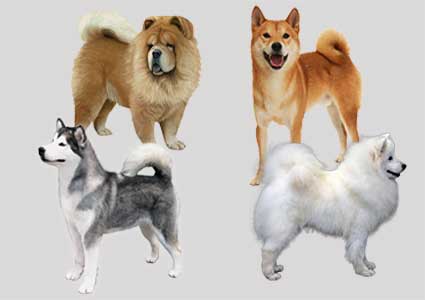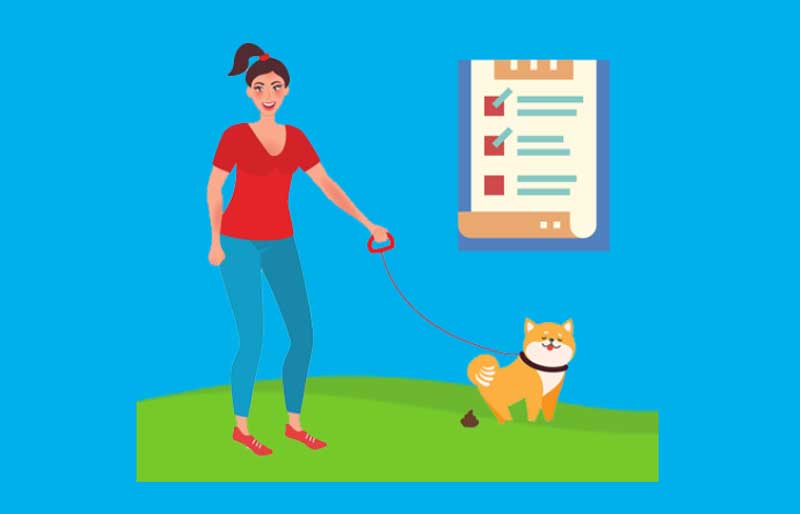
This is a complete guide on how to potty train your puppy fast.
In this guide, you’ll learn:
- How to prevent toilet accidents in your home
- Expert tips to speed up house training
- How to crate train your puppy
- How to paper/pad train your puppy
In short, if you want to quickly toilet train your dog, you’ll love this detailed guide.
Potty Training Guide Contents
Setup Potty Training Area
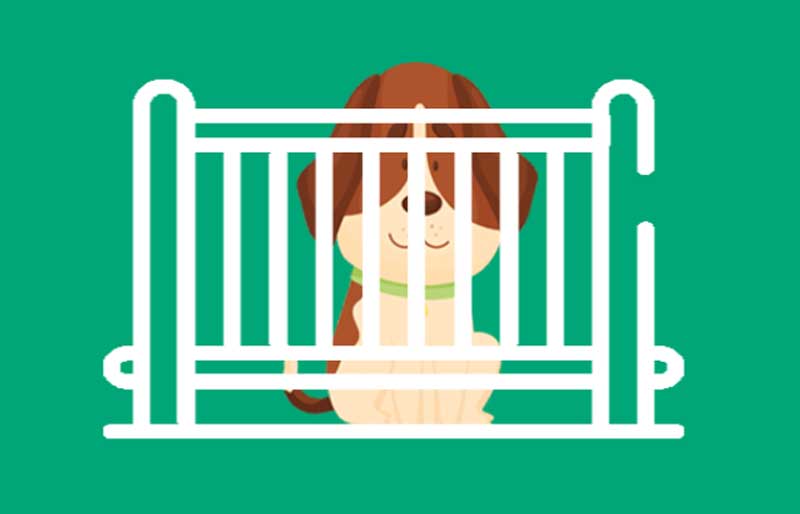
Puppies don’t naturally understand that they cannot eliminate inside your home.
For a puppy, your carpet or floor is the same as the grass outside.
That is why you need to begin house-training your puppy as soon as he is old enough.
When To Start Potty Training Your Puppy?
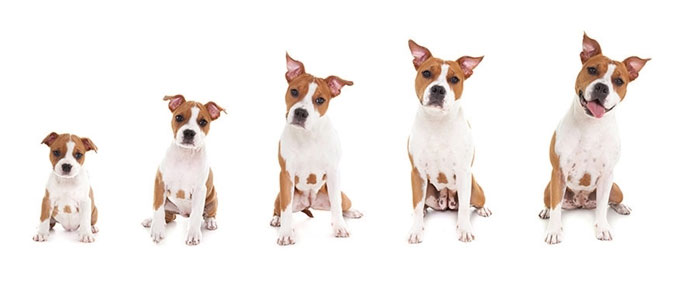
You can start house-training once your puppy is at least 2 months old.
A puppy can usually hold his bladder and bowels for roughly the same number of hours as his age in months. A three-month-old puppy can hold it in for about three hours.
This is just a rough estimate and not a perfect timeline.
Larger dog breeds can usually hold for longer than smaller breeds. Smaller breeds are also more likely to sneak into tiny hidden areas of your home and eliminate. This will offset the time estimate.
And that brings us to the next important point.
How to Prevent Potty Accidents In Your Home
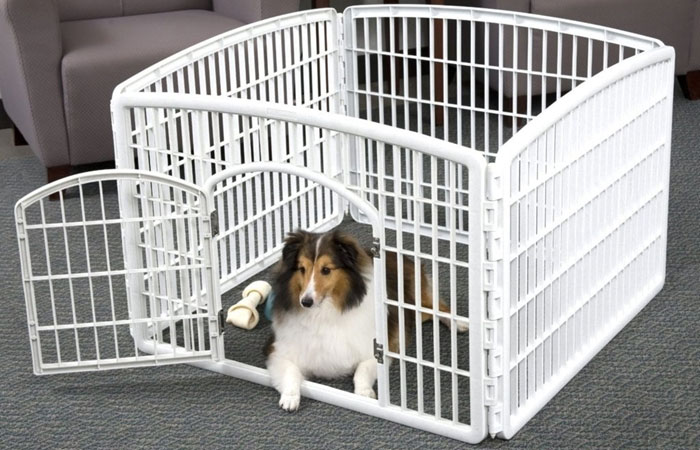
The first step in house-training is to stop your puppy from eliminating in the wrong places.
As you cannot watch your dog every moment of the day, you have to limit your puppy’s movement to a small area. Don’t give your dog free run of your entire home.
Your puppy doesn’t see your entire home as one big place, but as many different smaller places.
Even if your pooch learns not to potty in your kitchen, that doesn’t mean he will automatically learn not to go in your living room. In his mind, that is an entirely different space.
That is why you need to build a “den” to confine your puppy.
Puppies have a natural instinct not to eliminate inside their own den.
The key to confinement is that the area should be cozy but small. More like a bed than like a whole room.
Your dog will avoid eliminating in the area where he sleeps.
It would be best if you set up a playpen for your dog. Or you can restrict your pup in one small area of your home using baby gates or pet barriers.
If the den is small enough, it will help your puppy develop bladder and bowel control quickly. And this will also decrease the chances of any “accidents” when he is let out.
As he gets house-broken, you can slowly allow your dog access to more areas. Eventually, he will treat your whole home as his den and not eliminate anywhere other than the designated bathroom spot.
Pick a designated toilet area for your puppy
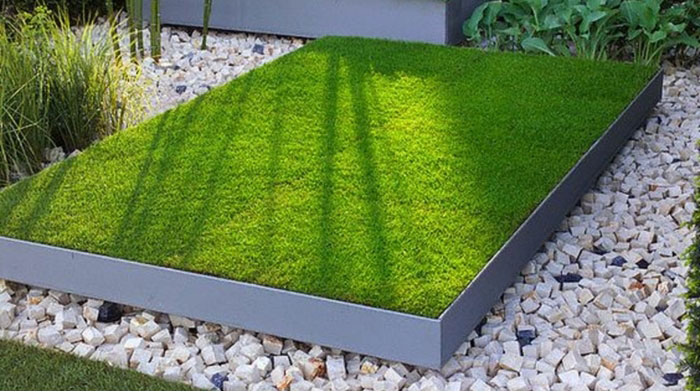
You need to make one critical decision before you begin house-training your puppy.
This decision will be based on your current home location and your life situation.
You have to choose if you will train your dog to just potty outdoors. Or if you will also teach him to eliminate in a designated indoor area on a potty pad or newspaper.
If you want to just train your pup to eliminate outdoors, then you only need to do crate training. If you also wish to train your pooch to potty in a designated indoor area, then you will also need to do paper/pad training.
Puppies that will be left alone in the house for more than 6 hours at a stretch will usually need both paper training and crate training.
If you live in a home where you cannot step outside frequently (like a high rise apartment), then it is best to do both paper training and crate training.
If there is always someone at home that can take your puppy outdoors or if you have a fenced backyard, then paper training is not needed.
Both crate training and paper/pad training have advantages and disadvantages.
Crate Training vs Paper/Pad Training
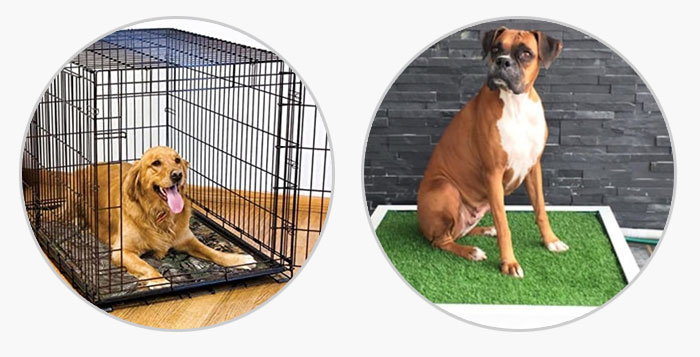
Crate Training Pros And Cons
Crate Training Pros
- Your puppy is confined to the crate when you are away or asleep. This reduces the chances of toilet accidents.
- It is easier to travel with a crate-trained dog.
- Daily consistent potty schedule
- Suitable for larger dog breeds
Crate Training Cons
- Your dog could take a longer time to get used to being inside the crate. He may whine or cry for hours.
- You cannot leave a young puppy in the crate longer than 3 hours.
- You may have to get up in the middle of the night to let the puppy out of the crate to eliminate
- Weather can interfere with potty training
Paper/Pad Training Pros And Cons
Paper/Pad Training Pros
- Puppy can be kept in a playpen or small room for much longer than in crate.
- No need to get up in the middle of the night to let the puppy out.
- Weather doesn’t interfere with potty training.
- Best for people living in an apartment building who can’t go outdoors frequently
- Suitable for smaller dog breeds
Paper/Pad Training Cons
- You will need to retrain your puppy if you want him to eliminate outdoors eventually.
- Your dog might see other fabric or paper surfaces in your home as a potty area and eliminate there (can be prevented with grass potty pads).
- You will need to clean up frequently after your dog.
- Potty schedule can vary daily.
- Some puppies learn to only eliminate on the pad and not outdoors. This could be trouble when you take your dog for a walk or leave your dog with a friend.
Once you have made an informed decision about whether you will crate train, paper train, or do both, you can now gather all the equipment need to housebreak your pooch.
Essential Tools To House-Break Your Puppy
- Collar & Leash: For taking puppy outdoors
- Crate: For crate training puppy
- Play pen or pet barriers or baby gates: For confining the puppy to a small area
- Plastic sheet: To cover the floor of the playpen
- Potty pads or newspaper: For paper/pad training
- Pooper scooper and poop bags: For cleaning up pet waste
- Small tasty food treats: To use for rewards
- Enzymatic cleaner: To remove all traces of waste smell
- UV-light torch: To detect hidden urine stains
- Belly bands: To prevent indoor toilet accidents
Design Your Pup’s Daily Routine
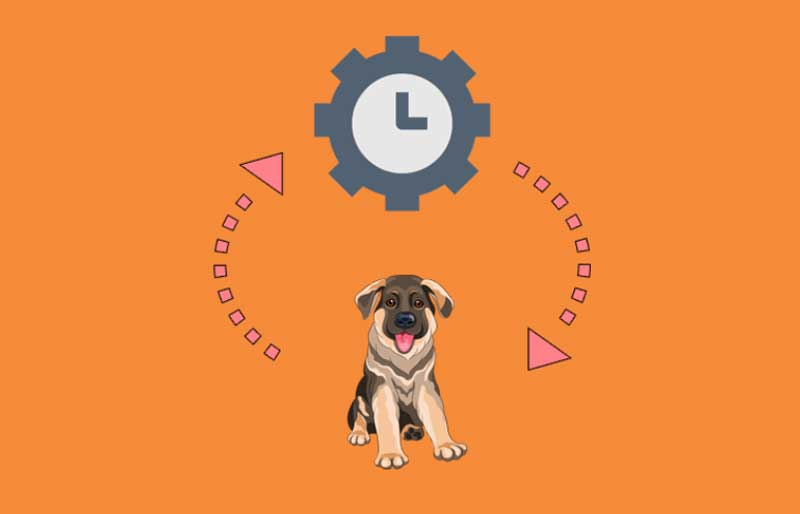
How well you design your puppy’s daily routine will decide how quickly you can potty train your puppy.
You need to manage six vital factors:
- Quality of dog food
- Daily feeding schedule
- Daily potty schedule
- Rewards for pup’s “gotta go” signs
- How you handle toilet accidents
- Teaching pup “go potty” command
Let us take an in-depth look at each factor.
Quality Of Dog Food
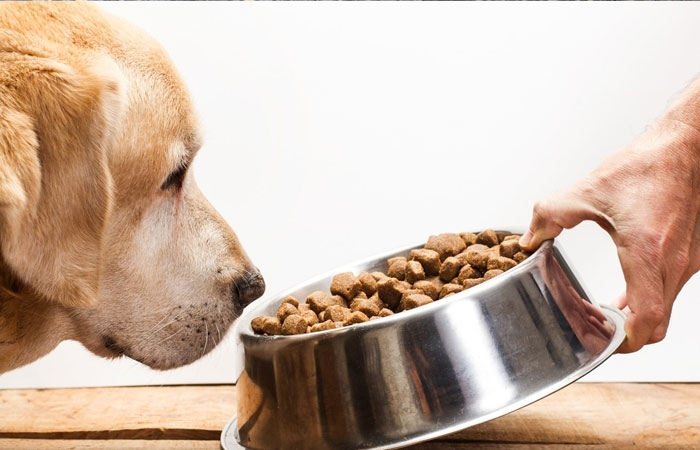
The quality of food your dog eats determines how frequently and how much he poops.
Lower quality dog food has more filler content with lesser nutrition. It doesn’t digest well, and this results in increased potty production.
This is not good for your pup’s potty training.
Higher quality dog foods digest well and satisfy your puppy’s hunger better.
Your dog won’t need to eat too much and will also poop less.
Don’t switch dog food brands while you are potty training. This can upset your pooch’s stomach and lead to diarrhea. And you don’t want that.
If you provide your puppy with a high-quality dog food consistently, then it will make his stools firmer and help your dog learn bowel control quickly.
Setup Daily Feeding Schedule
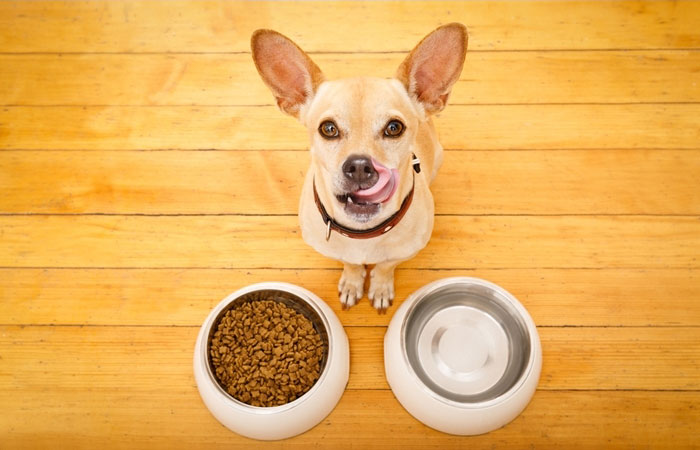
You must feed and train your puppy at the same time every single day. This will help your dog build a daily routine and prevent accidental pottying.
If you feed your puppy daily on a regular schedule, then he will eliminate on a regular schedule every day.
Your puppy will then learn precisely when bathroom time is every day and hold it till then.
During the training period, make sure your puppy only has access to food at the scheduled times.
Lock away any eatables that your puppy can get his paws on. Let other people in your house know they should only feed your dog at the scheduled times.
If your puppy eats at random times, he will poop at random times. You don’t want that.
Sticking to a daily feeding routine will make potty training faster and simpler.
PRO TIP: Give your pup access to water throughout the day, but make sure to take away his water bowl two hours before bedtime. This will prevent your dog from having to pee in the middle of the night.
Setup Daily Potty Schedule
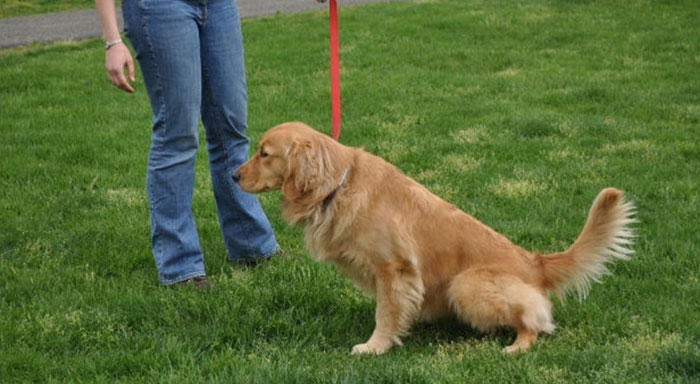
Develop a consistent and predictable daily potty schedule for your puppy.
Take your dog every day at the same time to the same exact spot to eliminate.
This reinforces in your dog’s mind that only this particular place is his toilet area.
If you change the time and place occasionally, it will confuse your dog.
Consistency is vital.
Take your dog to eliminate every day at these times.
- Twenty minutes after every meal
- After every nap
- After each playtime
- Before going to bed every night
Puppies less than 3 months old will usually have to eliminate once during the night as well.
Reward Your Pup’s “Gotta Go” Signs
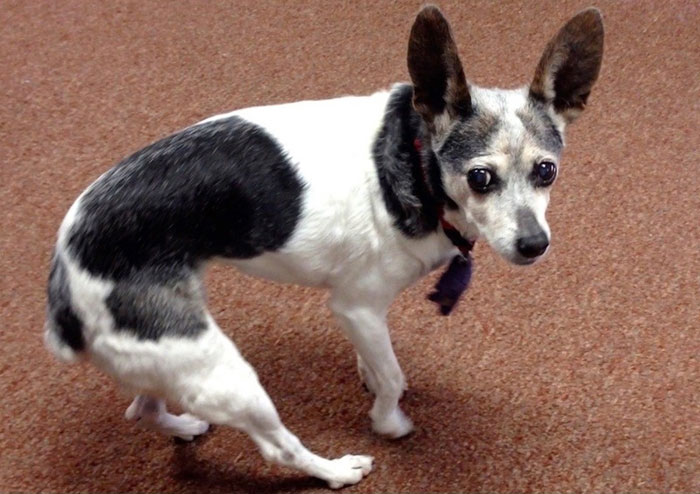
During the potty training period, it is essential to keep a close eye on your dog when he is outside confinement.
Your dog will display signs that he needs to eliminate.
If your pup begins to pace restlessly, bark, sniff, squat, or circle, then you should praise your dog for letting you know. Shower your dog with “Good boy!” and “Awesome!” and then quickly take your dog to his designated potty spot.
This encourages your pup to noticeably display his urges to you and speeds up his house-breaking.
If you catch your dog starting to eliminate indoors, then quickly distract your dog with a clap and a sharp “Hey, Hey, Hey!” and rush your dog to his toilet area.
This teaches your dog the difference between where he started to go and that specific area where you want your dog to go.
How To Handle Puppy Toilet Accidents
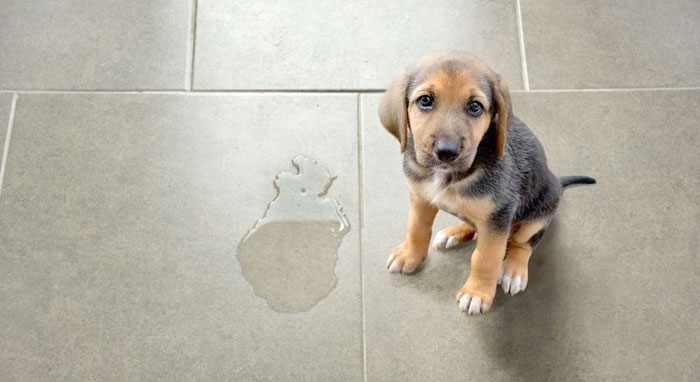
Your puppy is going to make mistakes during potty training. Your puppy is essentially a toddler, and he will take time to learn.
Puppies cannot fully control their bowels until they reach about four months of age.
So you should expect some accidents to happen.
You may feel things are going well, but then one day, you may find a smelly stain on your carpet.
It is very important to handle these toilet accidents correctly.
Never punish or yell at your dog if you find a soiled area after the deed is done.
Taking your pup back to that spot and yelling at him is not going to help. Your puppy cannot make the mental connection between his past act and your present anger.
If you punish him it will only make him scared to eliminate when you are around. And that is bad for his toilet training.
You must thoroughly clean up the soiled area. Cleaning with detergent or bleach will take away the stain but not fully remove the smell.
Even if a trace amount of the odor is left behind, your puppy will smell it and eliminate there once again. It is your dog’s natural instinct to eliminate in the same place where he has gone before.
You must use an enzymatic cleaner (pet odor remover) to fully erase all traces of his odor from the soiled area. This will ensure he won’t do a repeat performance there again.
Use a UV-light torch to detect any other neighboring areas where he may have eliminated and clean them all completely.
Establish A “Go Potty” Command
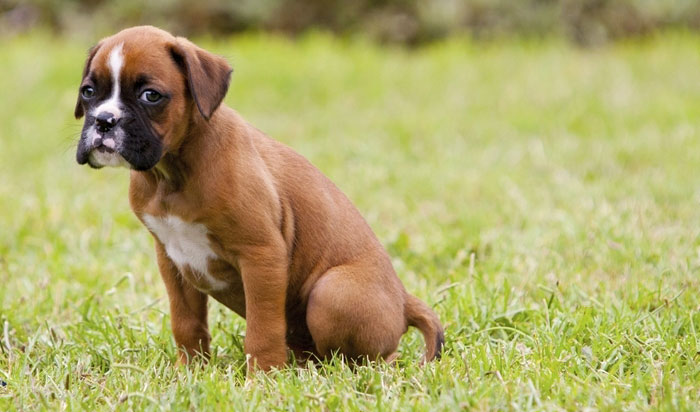
Every time you take your pup to his potty place, you should use the potty command.
The command can be any simple phrase like “Hurry up!”, “Get busy!”, “Do it!” or simply “Go potty!”.
Initially, to train him, you must first wait for him to eliminate. As soon as your dog starts to potty, say the command clearly and loudly just once.
Don’t repeat the command over and over. Use this single command consistently every time you take your dog to potty.
Once he is finished, praise your puppy greatly and give your dog a treat. The timing of praise is crucial. Only praise your pup after he is fully done. Or else he may stop in the middle of the act.
With daily repetition, your pup will begin to associate the command with his act.
Soon you will just need to issue the command, and he will go on cue.
This command will also be useful in the future when you travel with your dog or take your dog to your friend’s place.
How To Crate Train Your Puppy
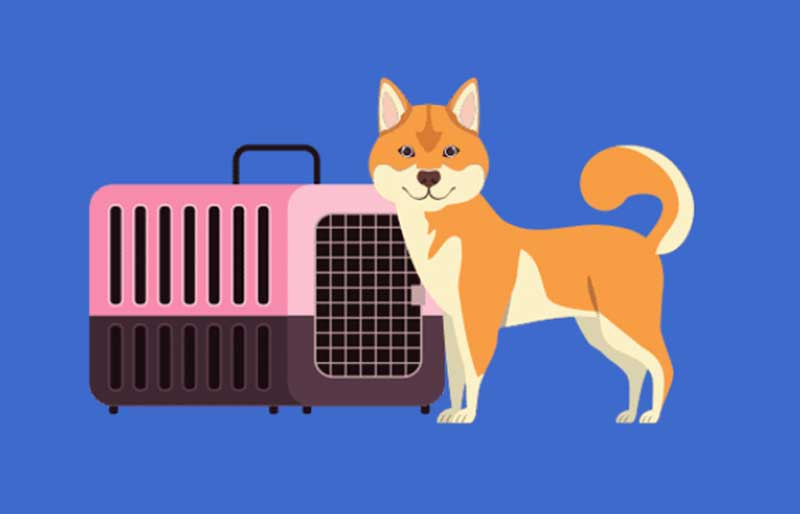
A crate is an essential tool for speeding up your puppy’s house training.
Putting your puppy in a crate will also protect your belongings from a puppy rampage when you are not at home.
It will also prevent your dog from developing bad habits.
Let us now look at how to crate train your puppy.
Isn’t It Cruel To Put a Puppy In A Cage?
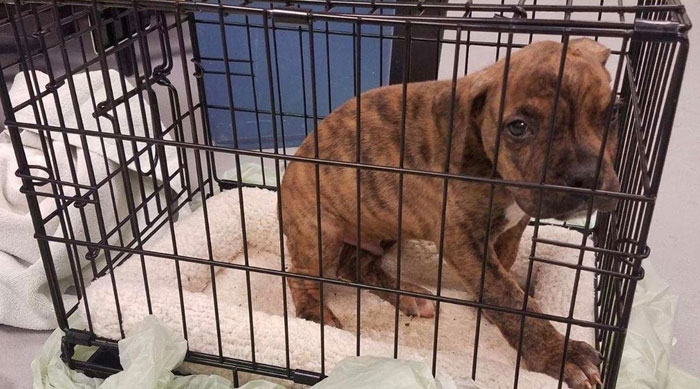
Many first-time dog owners feel uncomfortable locking up their dog in a crate.
Young puppies are actually quite comfortable with small spaces. In nature, pregnant dogs will seek out or build a small, secluded den to give birth to puppies.
In the wild, a dog does not bed down in the middle of an open field where predators can attack him. The dog finds a tree trunk or cave where he can feel a sense of protection.
Correctly using a crate can satisfy your dog’s basic need for security.
A puppy can feel quite safe and secure in a crate once he becomes familiar with it.
A crate is also useful (and sometimes necessary) when you travel with your pup.
How To Select The Right Crate Size
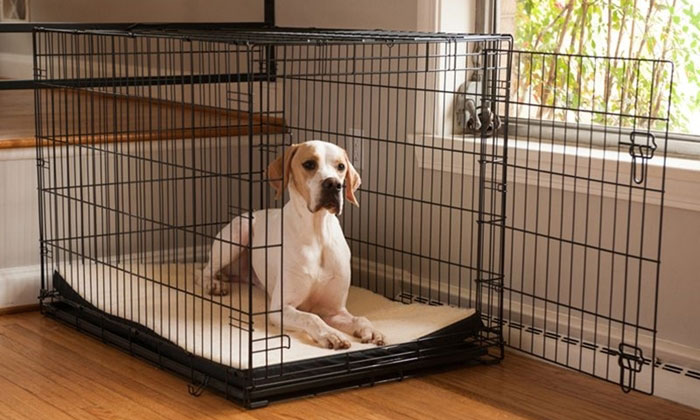
A large crate will allow your pooch to use one corner as a toilet and the other corner as a bed. This defeats the purpose of potty training.
The crate should only be big enough so your puppy can comfortably stand up straight, turn around and lie down with his legs stretched.
Dogs have a strong natural instinct to not soil the area they sleep in. The right sized crate will trigger this natural instinct in your pup.
Your dog will quickly learn bladder and bowel control as he spends time inside the crate.
If you have a large breed puppy that will grow a lot, then it is best to buy a crate with adjustable fencing. Else you will have to keep buying bigger crates as your pup grows in size.
Best Crate Location
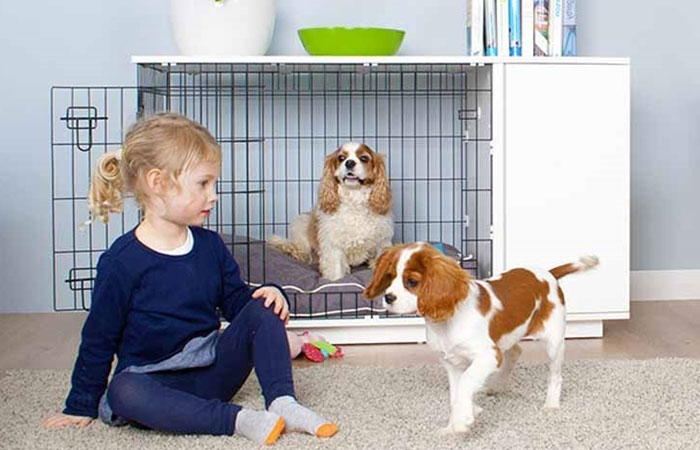
The crate should only be used as a training device and not as a place for punishment.
Your dog should associate only positive emotions with the crate.
Dogs always want to be near their pack. You and your family are your dog’s pack. So the crate should be close to you and your family at all times.
Place it in the busiest room of your house during the daytime.
Move the crate to different rooms of the house as you move around during the day.
At night, for the first two weeks, place the crate close by your bed so your puppy can preferably see you or at least hear you.
After two weeks, you can move his crate to the final location where you would be keeping your puppy at night in the long-term.
What To Put Inside The Crate (And What Not To)?
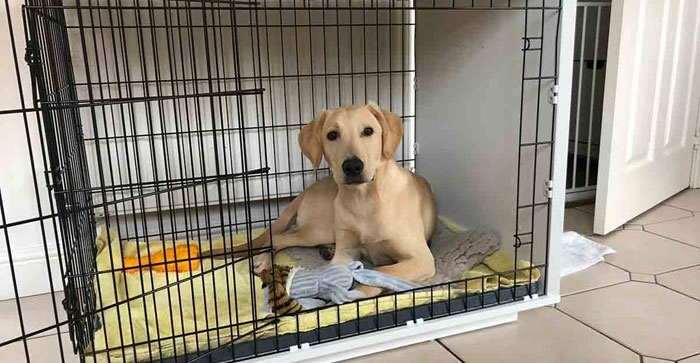
Line the floor of the crate with a soft, water-proof, and chew-resistant material like a crate pad.
Don’t put food or water inside the crate. It interferes with the house-training process. Your puppy may also spill the contents inside.
However, you can put a treat-dispensing puzzle feeder inside the crate. This will prevent your pooch from getting bored when he stays inside for extended periods.
A KONG is another great toy to put inside the crate that will keep your puppy mentally stimulated during his stay.
Crate Training Guide
Step 1: Crate Introduction
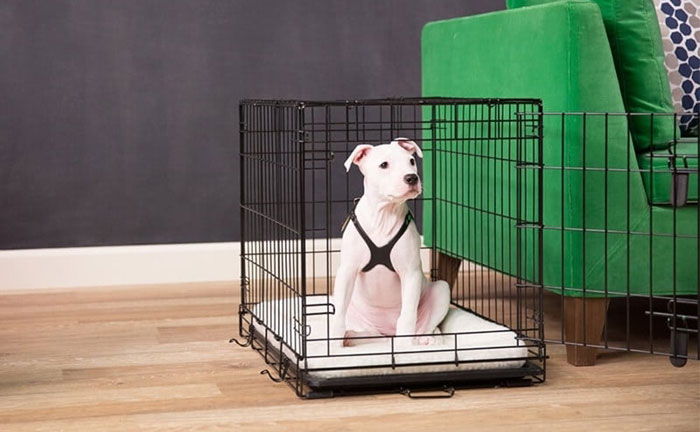
To make your dog comfortable with the crate, place it in a room where he spends a lot of time.
Leave the crate door open and let your pup explore the inside and outside of the crate on his own.
If your puppy is hesitant and moves away from the crate, then don’t try to force him.
Place a few of his favorite toys or his blanket inside the crate. Toss a treat inside the crate. Sit next to the crate and talk to your dog in a pleasant voice. Praise your dog and entice your dog toward the crate.
Let your pup take his own time and step inside the crate on his own.
Step 2: Feed Inside Crate
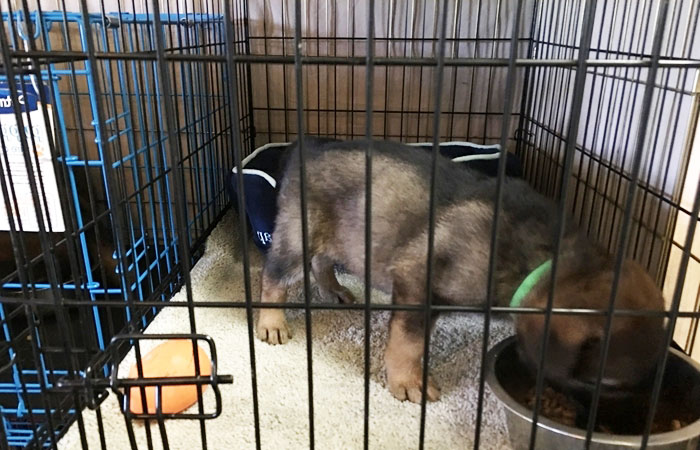
After your puppy has become familiar with the crate, the next step is to teach him how to be comfortable staying inside the crate for a short while.
The best way is to put the puppy’s food bowl inside the crate and let your dog feed with the crate door open.
First, keep the bowl halfway inside the crate so that only your pup’s front paws need to be inside while eating.
After a couple of days, keep the bowl all the way at the back of the crate.
Once he eats comfortably while entirely inside the crate, you can start closing the door just for the time while he is eating.
Initially, you can immediately open the door as soon as he’s finished eating. Slowly increase the time you keep the door closed after he’s eaten. Work your way up till he can comfortably stay inside the crate for almost 10 minutes after eating.
If your pooch starts whining or barking when closed inside the crate, then you may have progressed too quickly.
Tap the crate door gently and say “No” in a firm but gentle voice. Your pup will eventually learn to stop crying when inside the crate.
PRO TIP: Wait for your puppy to stop whining and only then let him out the crate. If you let your dog out as soon as he cries, then your pup will learn that whining will get him out. And you don’t want to teach that habit.
Step 3: Crate For Short Periods
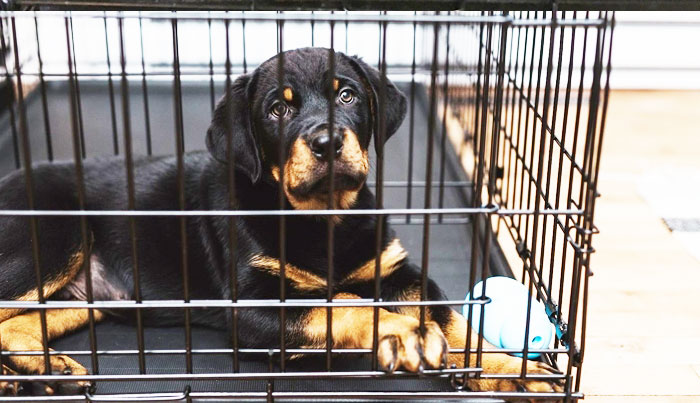
Once your pooch is comfortable eating his meal in the crate and stays inside for a short while afterward without whining, then you can begin crating your dog for short periods when you are at home.
Teach a command to call your puppy to the crate. Entice your puppy to come to the crate with a treat and then say a simple phrase like “crate up” or “kennel up.” Once your dog is inside, give your dog another treat and gently shut the door.
Sit beside the crate quietly for some minutes. Then let your dog out and give another treat and praise your dog.
Gradually increase the time for which you keep your puppy inside. Also, move away from the crate while staying in sight of your pooch.
Eventually, you will be able to crate your pup and move out of sight for 30 minutes.
When you return to the crate, your dog may get excited and jump around. Don’t respond to this and keep it low key.
Once you are close enough to the crate that your puppy can see you, don’t immediately open the crate. Wait for a few minutes and open the crate calmly and casually.
When he comes out, praise your dog and take him to the designated toilet spot to eliminate.
Always play with your dog or walk him for a minimum of ten minutes before you put him back inside the crate.
Repeat this training every day at the same exact time to build a consistent routine.
PRO TIP: Daily vary the time between when you close the crate door and when you leave the room (from between 1 minute to 10 minutes). If you crate your pup and leave the room immediately, your puppy may associate crating with being left alone.
Step 4: Crate For Longer Periods
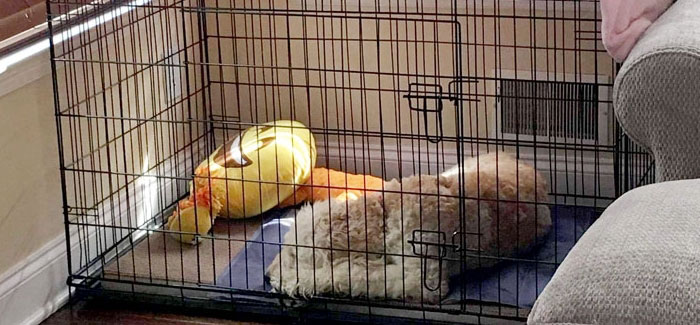
Once your dog can comfortably stay crated for 30 minutes with you out of sight, you can slowly work your way up to leaving for a few hours or even overnight.
You can leave the house and come back.
Every time you take your pup outside the crate, take your dog outdoors to eliminate. Use your potty command to stimulate your pooch to go potty. Don’t play with your dog until he eliminates.
Even if your dog whines or barks, you must wait till he has eliminated. Otherwise, you are teaching your dog to whine just to get out of the crate and play.
Every puppy has a limit to how long they can stay crated. Dogs require frequent social interaction.
Don’t keep your dog crated for more than 6 hours at a stretch (except overnight).
PRO TIP: If you will be gone for over 6 hours, then have a friend come home and take out the pup to eliminate. Or leave your dog at a doggie daycare.
Plan Your Pup’s Crate Training Schedule
Puppies younger than 6 months need to be fed at least three times a day. After 6 months, you can switch to feeding just twice a day.
Your pup’s potty training time table will be based on his feeding schedule.
Follow These Training Steps Daily
Each time you take your puppy outside the crate, follow the below steps.
- Take puppy outside on a leash to the designated toilet area.
- Give the potty command. Stand your ground firmly till your pooch eliminates.
- Then praise your puppy and give a treat.
- Take puppy for a walk or play for few minutes.
PRO TIP: Playing with your puppy after he has eliminated teaches your dog that he should toilet as soon as he is outside. Then he gets to walk/play with you longer.
If you bring your dog inside immediately after he eliminates, he will think that freedom ends as soon as he eliminates. So your dog will hold it in longer.
When you take your pup for a walk or play with your dog afterward, your dog learns that the sooner he completes his potty, the quicker he gets treats, playtime, and fun.
Sample Daily Crate Training Time Table
Here is a sample timetable for crate training a 6-month-old puppy. You can modify it based on your personal wakeup time, working hours, and bedtime.
Immediately after wakeup
(6 AM – 7 AM)
- Take puppy out of crate and follow steps
- Bring indoors and feed breakfast
- Put inside crate
Within an hour of breakfast
(7 AM – 8 AM)
- Take puppy out of crate and follow steps
- Bring indoors
- Put inside crate
Midday
(11am – 12pm)
- Take puppy out of crate and follow steps
- Bring indoors
- Put inside crate
Afternoon
(3pm – 4pm)
- Take puppy out of crate and follow steps
- Bring indoors and feed lunch
- Put inside crate
Early Evening
(7pm – 8pm)
- Take puppy out of crate and follow steps
- Bring indoors and don’t let puppy drink water anymore for the day
- Put inside crate
Late Evening
(Just before bedtime)
- Take puppy out of crate and follow steps
- Bring indoors
- Put inside crate for bedtime
Night Time
If the puppy is younger than 6 months or has night-time toilet accidents in crate, then take out once during the night. Else you can skip this.
Once you setup a feeding and toilet routine, stick with it for at least a week before you make any changes. This will help your puppy get house trained faster.
After a week of following one routine, you should have a good idea of when your puppy likes to eat and when he likes to eliminate. Based on this information, you can alter the schedule as needed.
How To Paper/Pad Train Your Puppy
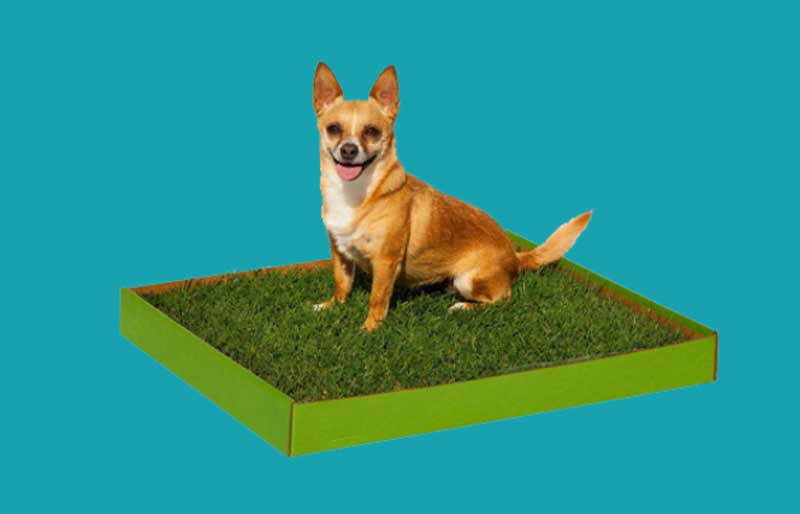
Paper training got its name from when people trained their dog to eliminate on old newspapers placed in a specific area of the house.
Nowadays, most people use special potty pads, litter boxes, or sod boxes instead of newspapers.
If you can’t frequently take your dog outdoors, or if you will be leaving the dog alone at home for long periods, then it is best to paper train.
Paper/Pad Training Guide
Step 1: Setup The Training Area
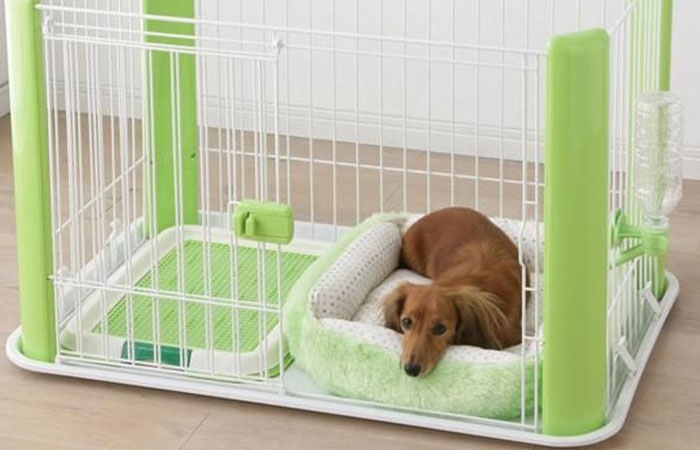
Use a playpen or use baby gates to confine your puppy in a small area.
Dogs prefer to eliminate on soft carpeted areas, so avoid these areas of your house.
Choose a place with a hard floor to set up the playpen.
Place a plastic sheet underneath the playpen so that you have a non-porous surface that will protect the floor and can be cleaned quickly in case of toilet accidents.
Put the puppy’s bed in the playpen and cover the remaining floor of the playpen with puppy potty pads. Dogs instinctively avoid toileting in the area they sleep.
Cover the entire floor with pads so that your dog has no choice but to go on a pad.
This reinforces the idea in your pooch’s mind that he must eliminate on the pad.
Step 2: Reduce Pad Covered Area
Once your puppy has eliminated, clean up the pad as soon as possible. Because your puppy won’t want to go again in the dirty area.
So if your pooch wants to go a second time, he may eliminate elsewhere.
When you clean up, make sure to leave a tiny bit behind. The smell of his own previous waste will encourage your pooch to eliminate again on the same exact area of the pad.
If your puppy somehow eliminated on the floor outside the pad, you must clean that area thoroughly with bleach and an enzymatic cleaner.
This makes sure that no trace of the odor is left behind, and your dog doesn’t do a repeat performance there again.
After a few days, your pup will start eliminating close to just one area of the pad and leave other areas clean. Usually, it would be the area farthest from his bed.
Now you can remove the pad closest to the bed. If your pup accidentally eliminates on the floor, quickly clean it as mentioned earlier.
It is best to keep a close eye on your pooch after he eats. When you catch your dog eliminating on the pad, praise your dog greatly and give a treat. If you find your pooch relieving on the floor, redirect him to the pad.
Gradually, the playpen will just contain the bed and one potty pad on which your puppy will eliminate every time.
Step 3: Start Moving Pad Towards Final Spot
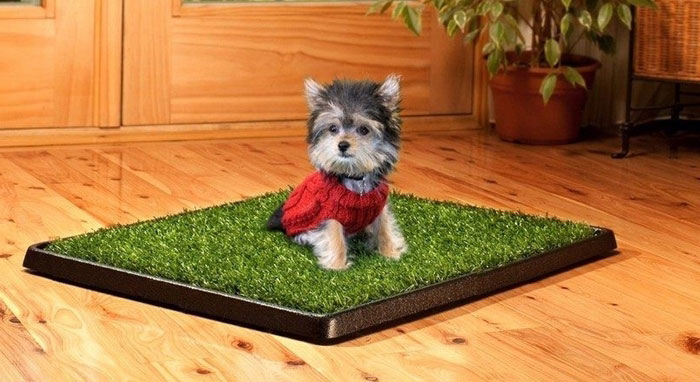
Once your puppy is consistently eliminating only on the pad when inside the playpen, you can remove the playpen and verify if he will still go on the pad.
Then daily start moving the pad a little towards the final location you have chosen for your dog’s toilet spot.
Your puppy should follow the pad and only eliminate on it. If he has an accident, clean thoroughly with an enzymatic cleaner, and keep an eye for next time.
Eventually, even when you leave your dog alone at home for long periods, he will only potty on the pad.
Resolve Delays & Setbacks
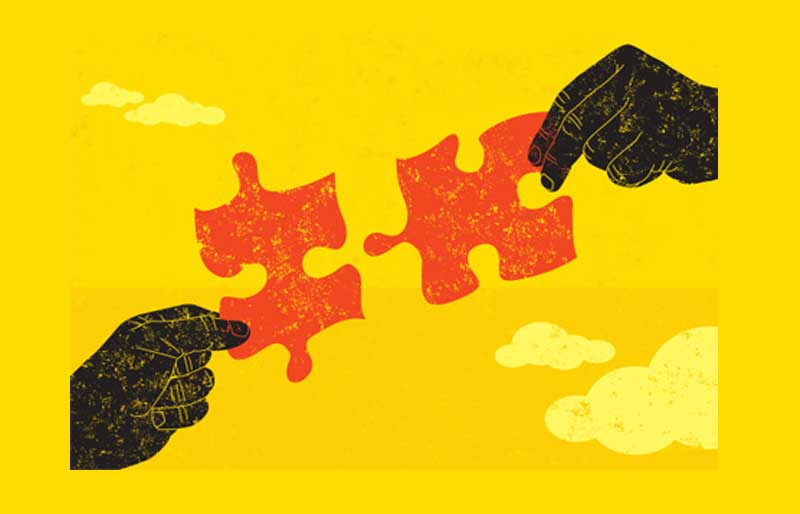
If your pup is having too many peeing and pooping accidents in your home, then you need to find out the underlying reasons.
There are three types of issues that may delay potty training:
- Human Issues
- Medical Issues
- Behavioral Issues
Let us now see how each issue can be resolved effectively.
Human Issues
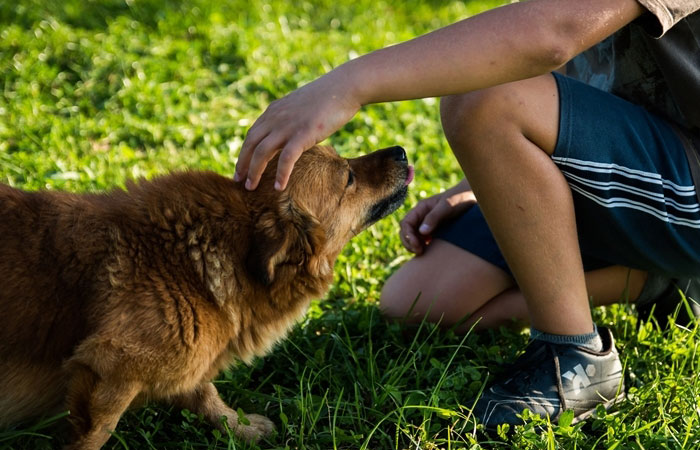
Sometimes the human is more responsible for the delay in potty training than the dog. Answer the below questions to find out if that is the case.
Does your dog eliminate every time you take him outside?
Every time you take your pup out the crate and go outside, he must eliminate at least a little.
Don’t start playing with your dog before he has eliminated. Issue your potty command and wait right beside him. Give him a few minutes.
If your pup doesn’t eliminate, then bring him back inside and put inside the crate. A few minutes later, take them out again and repeat.
You are not doing this as punishment but as a way to control your dog’s environment and prevent accidents.
Do you reward your dog’s positive behavior?
It is very essential to reinforce and reward your puppy’s good behavior with praise and treats.
Any time your pup eliminates at his designated toilet spot, you should praise him, play with him, and give a treat.
This will help your dog quickly learn that this is exactly what you want him to do.
Do you take your dog out immediately after meals?
Most puppies will need to go within 20 minutes of every meal. Some may even go immediately after the meal.
Keep a close eye on your puppy after every meal and watch for his “gotta go” signs. Take him out as soon as you see him sniffing, circling, whining, or giving other cues.
Even if he shows no signs, take him out after twenty minutes of every meal, and encourage him to eliminate.
Do you take your dog out immediately after waking up or taking him out of the crate?
Many puppies need to go immediately after they wake up. So once your puppy wakes up, take him out of the crate and go outside.
Don’t give yourself a coffee or toilet break first. Let the puppy do his business first, and then you start your day.
Do you take your dog out frequently enough?
Depending on age and breed, your puppy may need to eliminate anywhere from once every hour to once every three hours.
If you live in an apartment building, then taking your pup frequently may not possible. In this case, it may be best to first paper/pad train your pup.
Follow the instructions from the paper training chapter.
Do you keep your dog’s daily routine consistent?
You must go with your dog to the designated toilet spot every day at the same time. Follow the same route, use the same door, and stand at the exact same spot every day.
If someone else is taking your puppy on one particular day, then make sure they also follow this same routine.
Repeating the same pattern every day will help your puppy learn fast.
Do you clean up toilet accidents quickly and thoroughly?
Use a bio-based enzymatic cleaner to completely remain the stain and odor of any toilet accidents.
You should use a black light to check for any residual stains after cleaning. This will verify that no residue is left behind.
Even if the tiniest bit is left behind, your dog will smell it. And then he will be tempted to eliminate there again.
Medical Issues
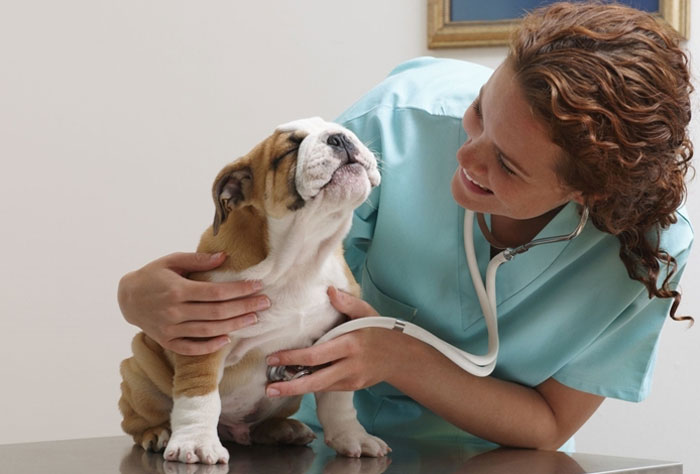
Many medical problems can interfere with house training.
Here are some medical issues that make it harder for your pooch to control his bladder and bowels.
- Kidney or Bladder stones
- Bladder inflammation
- Urinary tract infection
- Liver disease
- Intestinal parasites
- Inflammation of stomach or intestines
Take your dog to the vet to rule out any possible medical conditions that could be delaying his toilet training.
Behavioral Issues
Delay in the toilet-training of male dogs can be caused by aggressive territory marking behavior.
In female dogs, it can happen when they are in heat. A female dog becomes sexually mature at 6 months of age.
Belly bands can be greatly useful tools in these cases.
What is a Belly Band?

A belly band is basically a band of water-proof fabric that wraps around a dog’s midsection.
A belly band for a male dog wraps around his boy parts and prevents him from peeing.
Female belly bands work more like a diaper and look like underwear.
Using a belly band can ensure your dog doesn’t toilet inside the home. This can significantly speed up the house training process.
Only use belly bands as a last resort when you have exhausted all other options.
With patience and persistence, any dog can be house-broken and toilet trained.
Learning how to house-train a puppy takes time and focus. Once your pooch is fully house-trained, you will finally be able to let him roam your house without worrying. And that is well worth the efforts.



